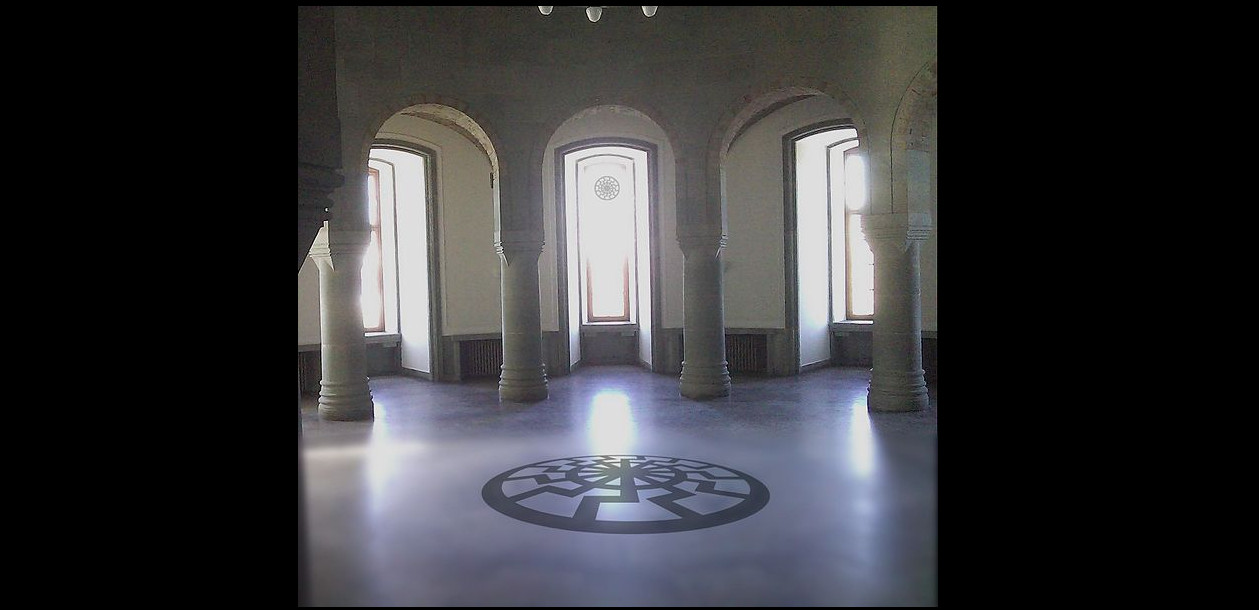The Black Sun, as a metaphysical symbol, holds a place of significant intrigue and paradox within the psychological framework established by Carl Jung. The concept is not one of his making, but the symbol finds resonance with the themes prevalent in Jungian psychology. The Black Sun, or ‘Sol Niger,’ is rich with alchemical and mystical connotations, often representing the nigredo, the initial state in the alchemical process that symbolizes putrefaction and decay, a necessary prelude to transformation and enlightenment.
From a Jungian perspective, the Black Sun can also be interpreted as a representation of the shadow self, a critical concept in Jung’s exploration of the subconscious. The shadow is the aspect of the personality that is unconscious, repressed, and undeveloped. It encompasses all that the conscious self finds unacceptable, much like the darkness that the Black Sun metaphorically emits. Yet, within this darkness, like the seed lying in the fertile soil, lies the potential for growth.
Jung believed that the integration of the shadow was an essential part of individuation, the psychological process of integrating the opposites within the psyche to achieve self-actualization. The Black Sun, then, can be seen as a symbol of the subconscious itself, a dark mirror that reflects the parts of ourselves we are reluctant to acknowledge. It calls for a journey inward, to confront the darkness and, in doing so, find the light of understanding and wisdom.
The metaphysical overtones of the Black Sun extend this symbolism further. It implies a cosmic significance to the shadow, suggesting that the individual’s inner work has repercussions that echo through the macrocosm, influencing the collective unconscious, a concept also developed by Jung. This collective unconscious is shared by all humanity and is the repository of archetypes and collective experiences. The Black Sun, in its encompassing darkness, may then serve as a metaphor for the collective shadows of societies and civilizations, the unacknowledged underbelly that, unless integrated, can lead to collective dissonance and suffering.
With the sol niger phase of the alchemical process, the alchemist works with the fundamental substance. This phase is crucial as it represents death and rebirth, the dying of the old self, and the birth of the new. In psychological terms, this echoes the need for one to delve into the depths of the subconscious, to face personal demons, and to emerge transformed.
This transformative aspect is at the heart of both metaphysics and Jungian psychology. It underlines a universal process of coming to terms with the darkness within and using it as a catalyst for transcendence. The Black Sun thus becomes a paradoxical beacon of light, illuminating the path to enlightenment through the embrace and understanding of the dark.
The Nazi adoption of the idea
The adoption of the Black Sun symbol by the German Nazi party during World War II is a stark example of how esoteric and mythological symbols can be co-opted and recontextualized for ideological purposes. The Nazis’ Black Sun, a design featuring twelve sig runes radially emanating from a center was incorporated into the floor of Wewelsburg Castle, which Heinrich Himmler had envisioned as a center for the SS. The design’s origins and the exact reasons for its adoption by the Nazis remain somewhat obscure, but it is generally thought to be an appropriation of older solar and wheel symbols that are found in various historical and mythological contexts. These symbols often represent life, power, and renewal, but under the Nazi regime, they were distorted to fit a narrative of Aryan supremacy and mysticism. The Black Sun as adopted by the Nazis was never an official symbol of the party, but its presence at Wewelsburg Castle suggests that it held some significance within Himmler’s vision for the SS. The Nazis’ interest in occult and esoteric knowledge is well-documented, and the Black Sun is often cited as an example of their efforts to create a new mythology by weaving together disparate threads of pagan and occult symbolism to legitimize their ideology of racial purity and domination.
Elsewhere in mythologies
As mentioned, the “Sol Niger,” is emblematic of the nigredo, a stage that signifies both decay and the first step towards the philosopher’s stone. The symbol is associated with the process of transformation, where the alchemist must work with the prima materia, which often involves a confrontation with darkness or base material to discover enlightenment or spiritual gold.
In various mythologies, sun symbols can simply represent the cycle of night and day, while deeper aspects of solar symbols sometimes representing the sun’s journey through the underworld or during an eclipse, symbolizing rebirth, renewal, and sometimes secrecy or hidden knowledge.
In conclusion
The Black Sun symbol, in its esoteric and alchemical contexts, represents a profound journey of transformation, echoing the stages of decay and rebirth that are central to the process of individuation in Carl Jung’s analytical psychology. It signifies the confrontation with the shadow self and the integration of the unconscious elements of the psyche, a symbol of enlightenment through the embrace of inner darkness. Historically, the Black Sun has been associated with alchemy’s nigredo phase, symbolizing the necessary descent into darkness before the ascent into light and understanding.
Today, the Black Sun carries with it a duality of meanings, on one hand, it is a poignant reminder of the potential for self-realization and the importance of integrating the shadow. On the other, it is a symbol that has been usurped by ideologies and extremism. It is a symbol that challenges us to remember the lessons of history and the power of symbols, urging caution in how such potent images are interpreted and used in cultural and political narratives.
